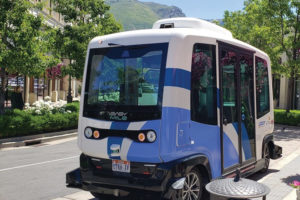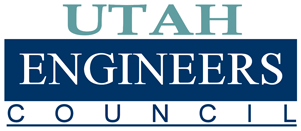By Claudia Arenas-Guerrero, Caite Beck, Vlad Bleoca, Jacob Dahlberg, Elle Stephan and David Templeton Purdue University
The overarching objective of the Ogden Downtown Alliance (ODA) is to bolster the city center through community engagement. The organization supports the growth of downtown Ogden by “increasing economic vitality and community vibrancy throughout Ogden’s Central Business District” (Ogden Downtown Alliance, 2018). Their most popular event is the farmers market in Downtown Ogden. Due to its size and popularity, it has become a testbed for some of the ODA’s other initiatives, such as its recycling improvement program (Bowsher, 2019). The recycling initiative is where the team focused their efforts.
Currently, Ogden City does not have a viable recycling program due to the continual contamination of recycling bins with nonrecyclable materials. This contamination greatly affects the labor and equipment needed to process the materials, driving up cost and exceeding the city’s budget. The ODA is acutely experiencing these consequences through the public events that they host, resulting in recycling bins being removed altogether until the issue is resolved (Bowsher, 2019). Ultimately, the ODA’s objective is to reinstate recycling bins at all public events through increased community education and awareness about Ogden’s recycling program as well as create a streamlined recycling process during these events. The ODA created a Recycling Task Force, but their meetings have been limited and have seen little progress.
After the team’s application of the Viable System Model (VSM), the team redirected its focus specifically to the educational outreach opportunities that would allow for a more viable recycling program. Within this paper, the team addresses how the communication and engagement systems were further defined and what recommendations can be implemented to be effective while accommodating budgetary and resource limitations within the ODA.
Methods (Tables and figures are contained in the full article that can be accessed at the link below:
Implementing-CriticalSystems-Heuristics-and-Soft-Systems-Methodology)
Step 1: Description of the Situation Considered Problematical
The team began by asking the sponsor questions that would fully define the problematic situation. The questions asked and sponsor’s responses are summarized in Table 1.
Step 2: Expression of the Situation as a Rich Picture
The team created a rich picture (Figure 1) to depict the current situation.
Step 3a: Identification of the Relevant Systems
The idea for a communication system emerged, which was solidified by identifying symbols synonymous with communication in the rich picture. The specific items contributing to the communication system are circled in red in Figure 2.
After the team identified the communication system, the team evaluated the remaining items in the rich picture and decided that they would focus primarily on human interaction. The public’s interactions with the recycling program and the ODA and its stakeholder’s interactions with the public establishes the engagement system, circled in blue in Figure 2.
Step 3b: Answering Ulrich’s Boundary Questions
The team worked with the ODA’s director, Kim, to answer the set of 24 questions defined by Critical Systems Heuristics (CSH). This exercise was completed to help the team further understand the current situation (reference system), identify any existing conscious/unconscious judgments, and design an improved scenario based on how the team envisions the system to work (Ulrich & Reynolds, 2010). The questions are listed along with the answers for the two relevant systems in Table 2.
Step 3c: Root Definitions of the Relevant Systems
When defining the root definitions, the team applied the Customer, Actor, Transformation, Weltanschauung, Owner and Environment (CATWOE) approach developed by the INCOSE UK (Emes, et al., 2012). The goal was not only to describe what the system does, but also how and why it is important for the customers who benefit from the change in state, the actors that enable the transformation, the aspects that make the change meaningful and how it affects and can be affected by the environment (Williams & Hummelbrunner, 2010).
For the communication system, an effective distribution of knowledge was identified as the key transformation. This root definition for the Communication System, made up of Customers, Actors, Owner and Environment, is depicted in Figure 3.
For the Engagement System, the team identified the promotion of enthusiasm for recycling as the key transformation due to the lack of interest that Ogden residents, businesses and officials have shown to get actively involved with proper recycling efforts. The root definition for the Engagement System is depicted in Figure 4.
Step 4: Conceptual Models of the Relevant Systems (Holons) Named in the Root Definitions
The conceptual model for the Communication System is shown in Figure 5. The conceptual model for the Engagement System is shown in Figure 6.
Step 5: Comparison of Models and the Real World
The Burge tables for the communication and engagement systems are summarized in Table 3 and Table 4, respectively.
Step 6: Identification of Changes
The changes identified in the Burge tables, as well as the scores for the Ease-Benefit matrix, are summarized in Table 5 for the Communication System and Table 6 for the Engagement System. The Ease-Benefit bubble charts for the Communication and Engagement Systems are depicted in Figure 7 and Figure 8, respectively.
Team Recommendations
The team recommends that the ODA should pursue the following changes for the Communication System
To create meaningful changes that are both impactful and are relatively easy to implement, the group recommends four suggestions based on the Ease-Benefit Matrix outlining the potential benefits of the Communication System. The first recommendation is to translate the recycling requirements into laymen’s terms that can be easily distributed to the public. Research has shown that there is already a generally high awareness by the general public on the benefits of recycling, and efforts should thus be focused on effectively educating the public on proper recycling habits that will enhance recycling performance (Timlett & Williams, 2008). The first step in achieving this is to illustrate the capabilities of the private recycling company effectively. When outlining this information, the ODA should focus on what specifically can be recycled and the different recycling collection locations that exist within ODA-sponsored events (Kaplowitz, Yeboah, Thorp, & Wilson, 2009). The team recommends this action because it has a high level of benefit despite its mediocre level of ease. It would require some research to fully develop the requirements of the recycling program into an easy-to-digest platform for the end-user, but the payoffs would be worth the effort. The most important point to this translation is that the result should cater to the specific needs of the Ogden citizens. Research suggests that the effectiveness of persuading the population to adopt an effective recycling program can be “enhanced by the inclusion of information from reference groups relevant to the individual” (Burn & Oskamp, 1986). Ultimately, the ODA should stray from focusing on overwhelming the citizens with vast knowledge about the larger system and should instead focus on the environmental content and how the effective recycling program specifically benefits the citizens of Ogden (Kaplowitz, Yeboah, Thorp, & Wilson, 2009).
The second recommendation to the ODA by the team is to define a succinct mission, goals, roles and responsibilities of the members of the Recycling Task Force. By defining a mission statement, goals and roles for the members of the task force, the team will be able to maintain momentum and see tangible steps forward toward the implementation of a successful recycling program within the community. The definitions can be completed with relative ease and would have a high benefit for the recycling program moving forward.
The third recommendation to the ODA by the group is to identify effective ways to interact with patrons during events. The interactions with patrons will be most effective if the personal contacts that are identified by the ODA “possess adequate knowledge regarding the operations” or the ODA’s recycling program in addition to the “benefits of recycling as a whole” (Kaplowitz, Yeboah, Thorp, & Wilson, 2009). Having subject matter experts near recycling bins at ODA events can assist patrons in making correct recycling choices and can provide that personal interaction that research has shown to be successful. Also, the impact of communication efforts depends upon the credibility of the person performing the communication (Burn & Oskamp, 1986). Thus, having subject matter experts would improve the impact that the communication would have on the attendee.
The fourth and final recommendation to the ODA is to use a broader spectrum of easily accessible and obtainable mediums to communicate the recycling program to the attendees of ODA events. These additional mediums could include pictures on bins, billboards and “word-of-mouth” by event vendors as well as other forms of media. The use of a large variety of mediums allows for recycling information to be effectively communicated across different groups and be catered to whatever method is most effective for the target audience (Kaplowitz, Yeboah, Thorp, & Wilson, 2009). While the largest hindrance to a large-scale education or advertising campaign is usually related to monetary limitations, implementing small-scale improvements to the Communication System can also be effective.
Tables and figures are contained in the full article that can be accessed at the link below:
Implementing-CriticalSystems-Heuristics-and-Soft-Systems-Methodology
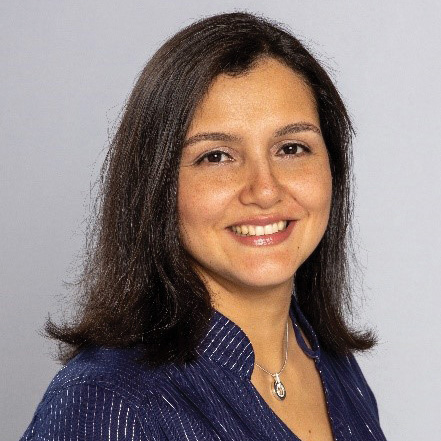
Claudia Arenas
Claudia works as a Six Sigma Master Black Belt for Cummins Inc. She has over 10 years of experience in the manufacturing industry spanning from controls, process engineering and new product introduction to quality assurance and project management. She has led a wide range of process improvement projects in manufacturing, sales and service areas. She graduated with a master’s in electrical engineering from the University of Kentucky in 2010 and a master’s in interdisciplinary engineering with a concentration in business management from Purdue University and the Kelley School of Business in 2019.
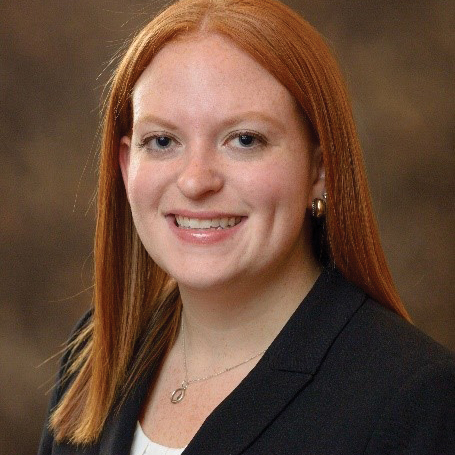
Caite Beck
Caite has worked for Northrop Grumman as a structural design engineer for the metals, seals and joints group for one year in Promontory, Utah. Her previous role was as a supply chain quality engineer for Northrop Grumman for 2.5 years. During these two roles, Caite has worked on NASA, commercial and government aerospace programs. Originally from Houston, Texas, Caite moved to Utah by way of Illinois after receiving her B.S. in aerospace engineering from the University of Illinois at Urbana-Champaign in 2016. She completed her M.S.E. with a concentration in aerospace engineering from Purdue University in 2019 and is currently pursuing her MBA from the Kelley School of Business at Indiana University.

Vlad Bleoca
Vlad has been a designer at General Motors for the past five years. During this time, he has obtained a DFSS Green and Black Belt certifications and also began his master’s in systems engineering at Purdue University. Prior education includes a bachelor’s in engineering technology from the University of Windsor and an associate degree in mechanical engineering automotive product design from St. Clair College. Vlad resides in Windsor and commutes to the General Motors Corp. Warren Tech Center in Warren, Michigan. In his free time, he enjoys backcountry camping, traveling, wrenching on cars, playing sports and staying active.
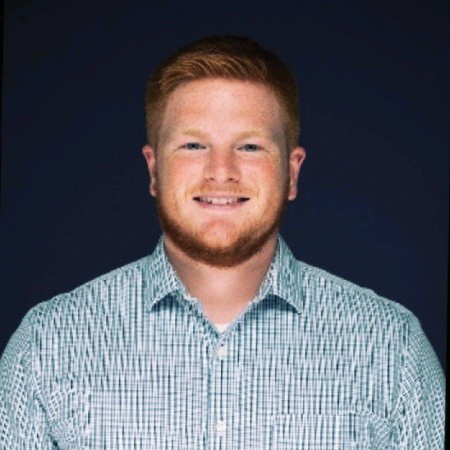
Jacob Dahlberg
At the time of writing this paper, Jacob was a senior pursuing a B.S. in aerospace engineering from Purdue University. He has participated in the American Institute of Aeronautics and Astronautics (AIAA), Purdue Automotive Performance Association (PAPA), Purdue Club Tennis, and a five-session co-op with Gulfstream Aerospace Corporation in Savannah, Georgia. He started full time as a service engineer with Gulfstream in January 2020.
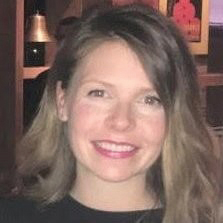
Elle Stephen
For the last three years, Elle has been working at Los Alamos National Lab in New Mexico as an R&D engineer developing machining processes for nuclear material. Before that, she lived in Indiana (born and raised) and spent 4.5 years working for Honeywell Aerospace as a product design engineer qualifying aircraft fuel controls. She obtained her B.S. in aerospace engineering from Purdue and is currently pursuing an M.S.E. focused on systems engineering.
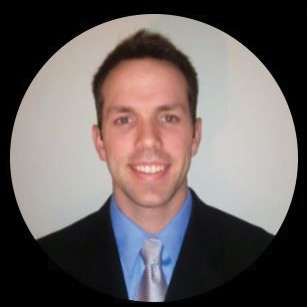
Dave Templeton
Dave has been a lead ground test engineer at Sikorsky Aircraft (part of Lockheed Martin) in Stratford, Connecticut, for six years. He was previously a rotors and blades structural analysis engineer at Sikorsky for five years. He received his B.S. in mechanical engineering from Cornell University. He has also obtained his MBA from the University of Connecticut and an M.S. in aerospace engineering from Purdue University.






